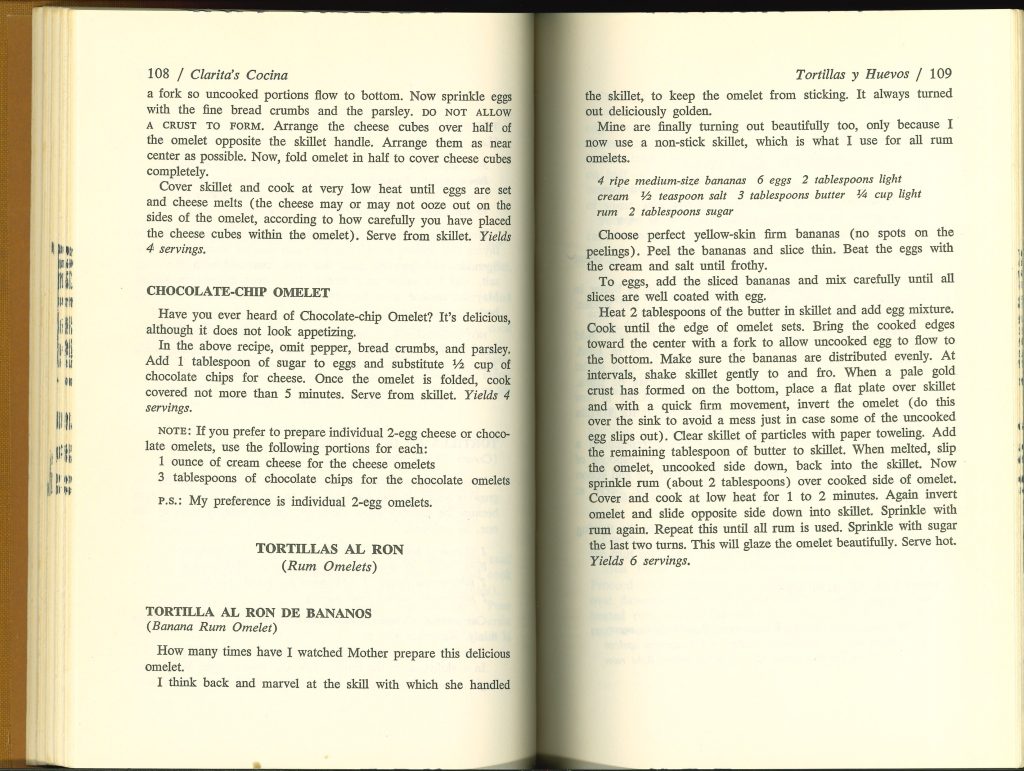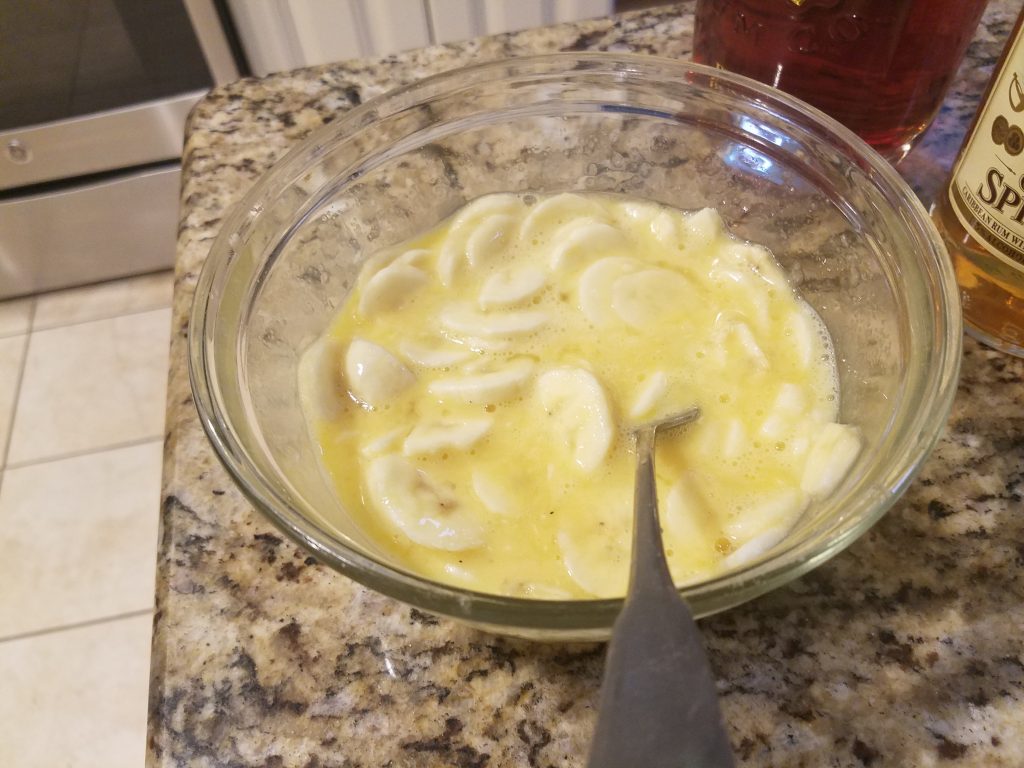This post was guest authored by Andy Huse, Florida Studies Curator and Librarian in Special Collections at the Tampa Library
There must be a whole universe of forgotten recipes. The favorites of yesterday often fall out of fashion, never to return. Then there are others that are crying out to be rediscovered and brought back from the dustbin of history.
THE COOKBOOK
The Garcia family had been partners at the Columbia Restaurant in the 1920s who were bought out and became competitors. In the 1930s, the Garcias struck out on their own by reviving the Las Novedades Restaurant, one of Tampa’s oldest, opened in 1890. A heated but friendly rivalry ensued through the 1960s. In 1970, the future of Ybor City was murky. Urban Renewal had concerned itself with clearing the land of undesirable properties, gutting the historic district with no plan for actual renewal. That year, the beloved Las Novedades restaurant was sold to land developer Jim Walter. The eatery was to be run by the Columbia Restaurant as part of an elaborate outdoor mall called the Spanish Walled City, a concept that would include “bloodless bullfighting” as a central attraction. The ill-conceived development was never built. Manuel Garcia Jr. Saw a future in fast food and invested heavily a successful Burger King franchise in central Florida.
In the midst of these Ybor City’s distress and the sale of Las Novedades, Manuel Jr.’s extraordinary wife, Clarita, wrote Tampa’s most important single cookbook, Clarita’s Cocina. A scholar of language at the University of Madrid, Clarita could claim an impressive pedigree in hospitality. Her grandfather had run a Spanish inn and her uncle cooked for King Alfonso XIII. Garcia worked as an interpreter before moving to Tampa. A faithful record of Spanish cuisine leavened with her charming notes, Clarita’s Cocina is still considered to be an essential resource for anyone interested Tampa’s Spanish food. For years, Clarita appeared on television, showing audiences how to make Spanish favorites on various local programs. The book also solidified the reputation of Las Novedades as a source of Tampa’s finest cuisine. Doubleday Press published Clarita’s Cocina in 1970 amidst much uncertainty about the future of Las Novedades and Ybor City.
THE RECIPE
If you were to dine out in a fancy Spanish restaurant in Tampa a century ago, you would have been likely to see some open flames in the dining room. Rather than post-World War II classics such as Crepes Suzette and Bananas Foster, the flambe preferred by Spanish chefs tended to be a forgotten gem called tortilla Al Ron, or rum omelet. If you are anything like one of my coworkers, suggesting that eggs could serve as a dessert with fruit is nauseating. But if you’re anything like me, you are more curious than repulsed. Flan, after all, is an egg-based custard.

It is helpful here to know the Spanish omelet, which they refer to as a tortilla, and how it is normally cooked and served. This is not a French or diner-style omelet that has been folded over. It is more like a frittata, usually laden with potatoes and onions, but there are endless variations. It is often served as an entree or as a party appetizer, cut into small tooth-picked squares. Tortillas tend to be large, and this recipe called for six eggs, a portion meant to be shared. I scaled mine down to four eggs to serve four.

In the case of the rum omelet, the main ingredient is firm yellow bananas, but take note that this is not banana bread. The recipe specifies using firm bananas with no brown on the peel. We are looking for bananas that are just barely ripe. Slice these very thinly.

Clarita’s Cocina recipe featuring bananas is one of several rum omelets. “How many times have I watched mother prepare this delicious omelet?” Garcia wondered in the recipe’s notes. “I think back and marvel at the skill with which she handled the skillet, to keep the omelet from sticking. It always turned out deliciously golden. Mine are finally turning out beautifully too, only because I now use a non-stick skillet, which is what I use for all rum omelets.”
THE BAKE/COOK
You want to cook this pretty well before you try flipping it, as much of it on the top will still be runny and difficult to manage. The old Spanish recipes always have you turning this mess out onto a plate and then somehow sliding it back into the pan, but I find that to be highly impractical. Instead, I gently heated up another skillet and flipped the omelet into it over the sink. Sprinkle in some rum and continue cook through.

Garcia’s recipe did not call for lighting up the rum, but if you are like me and can’t resist, be safe. The alcohol cooks out of the dish either way. The recipe specified light rum, but I strongly felt that more flavor would be advisable here, so I used a mix between Bacardi white, Captain Morgan’s, and Bumbu flavored rum, which is hard to describe but evokes butterscotch for me. I’m not a big fan of flavored liquors, but they worked well here and I would use the same mix again. Be sure to douse both sides of the omelet as instructed.
I was unsure how this would turn out, but my family and I were very pleasantly surprised at the gentle rum and banana flavor. The thin layers of banana cooked into the omelet and became part of the creamy experience. We served the omelet in wedges with a small cup of coconut chocolate chip ice cream on the side, a winning combination. Now I’m thinking of all kinds of other variations, such as removing the omelet from the pan before adding guava marmalade to the sauce, then flambéing and pouring over the omelet.

Learn more:
Want to read more posts like this one?
Explore our Baking the Archives series!
- Baking the Archives: Utilizing historical recipes in honor of National Homemade Bread Day
- Baking the Archives: A Pie for Pi Day
- Baking the Archives: Blueberry cake(ish)
- Baking the Archives: A sweet start for Fall
- Baking the Archives: Dead Bone Cookies
- Baking the Archives: Rum Omelet
References
Garcia, Clarita. Clarita’s Cocina; Great Traditional Recipes from a Spanish Kitchen. [1st ed.]. Garden City, N.Y: Doubleday, 1970. Print.